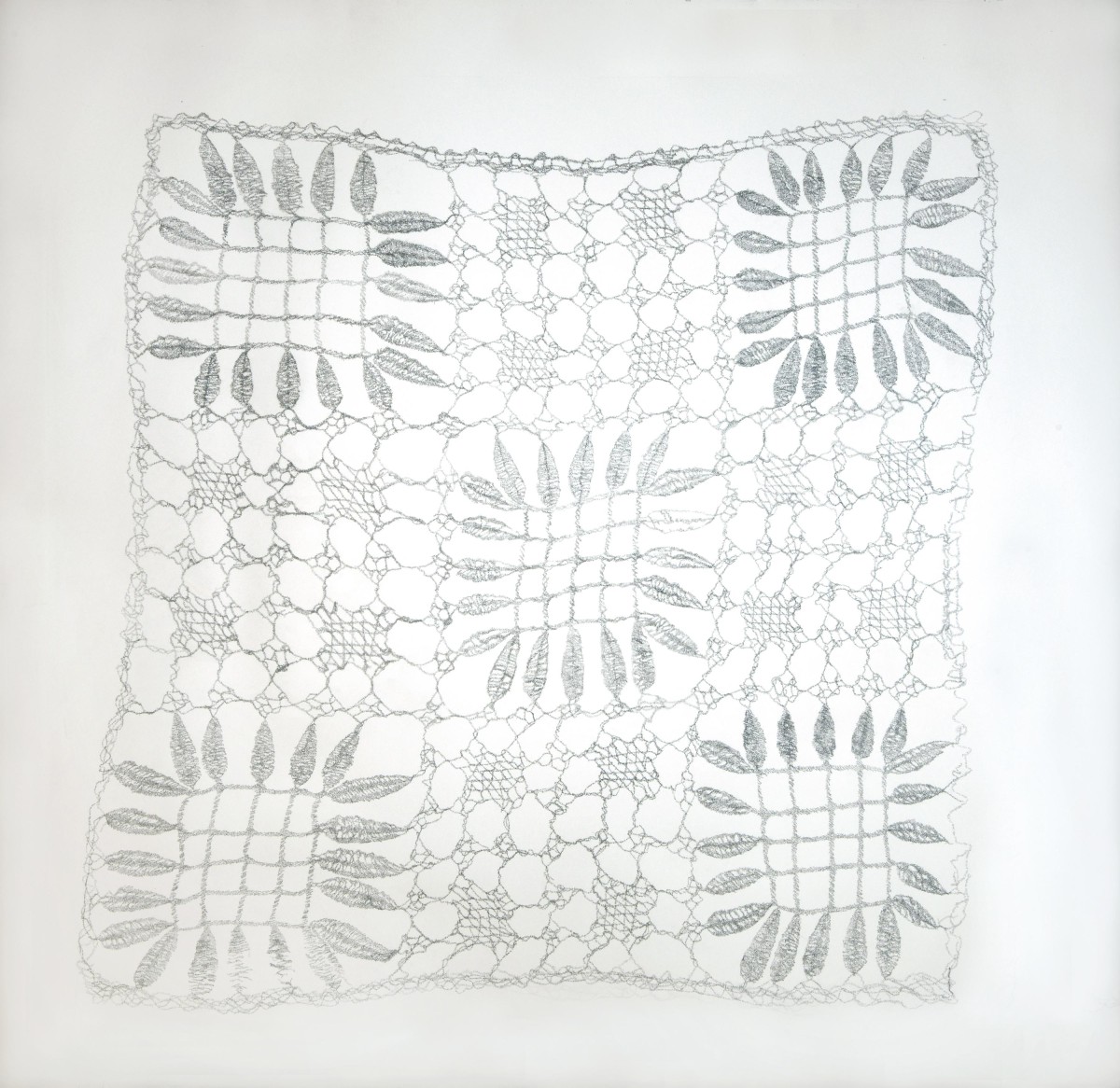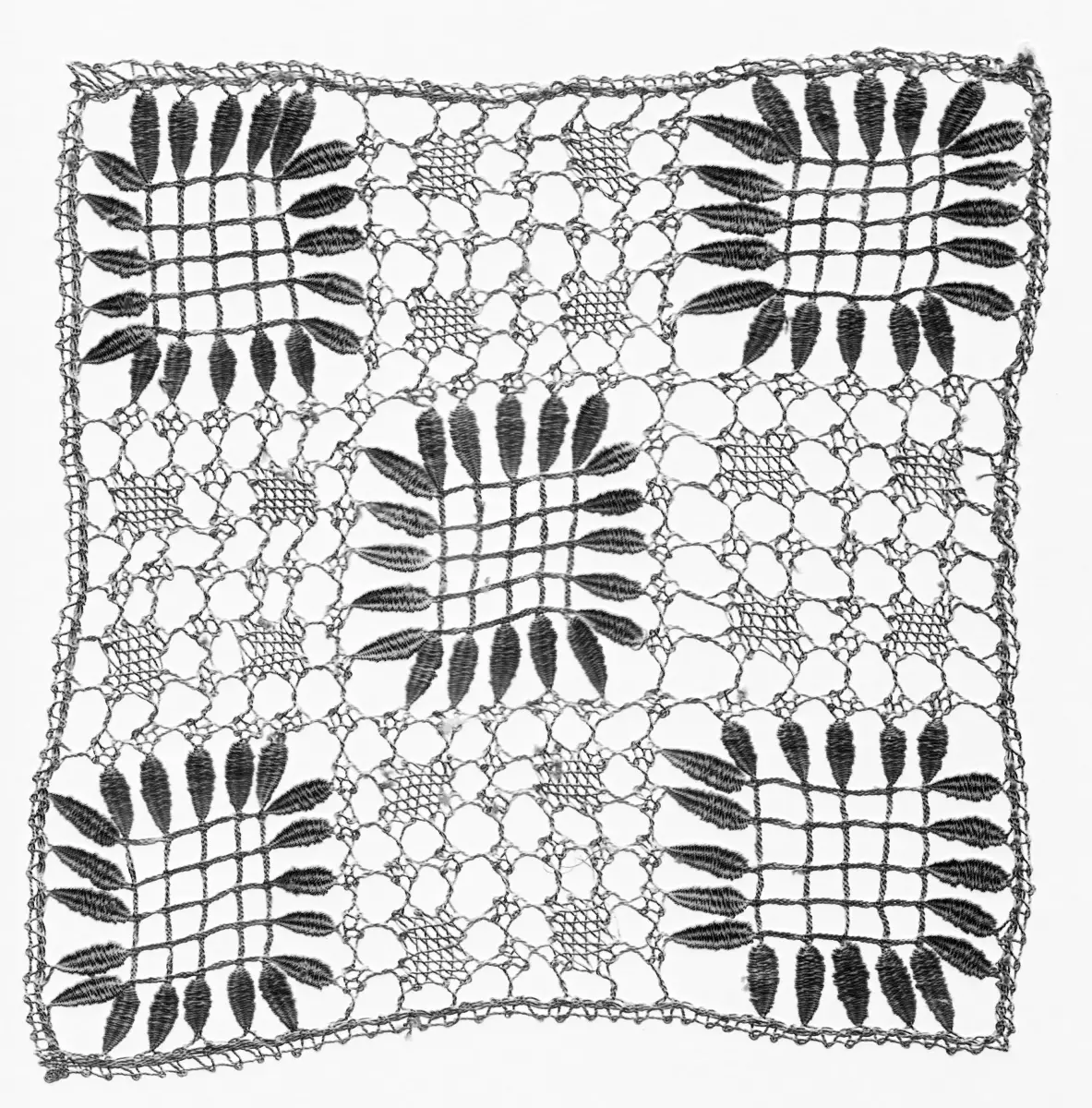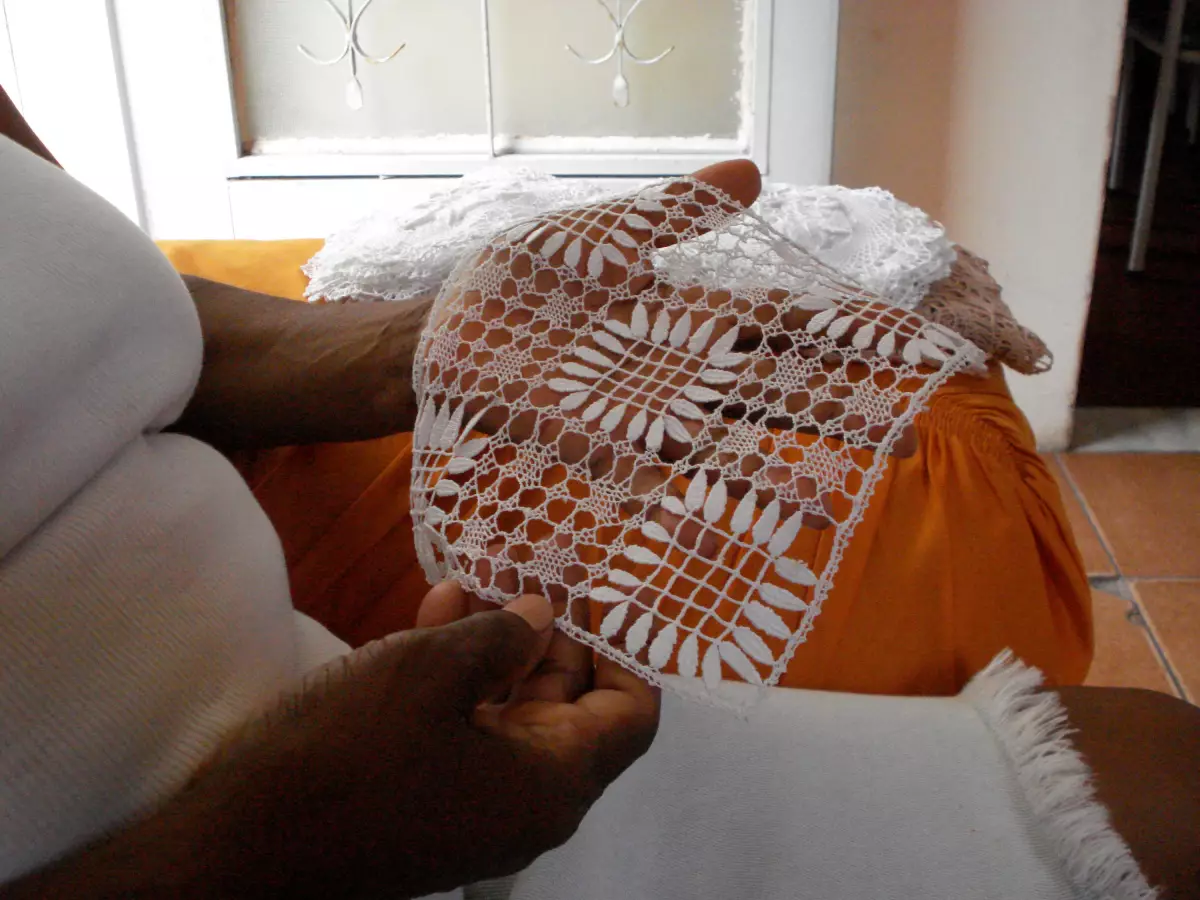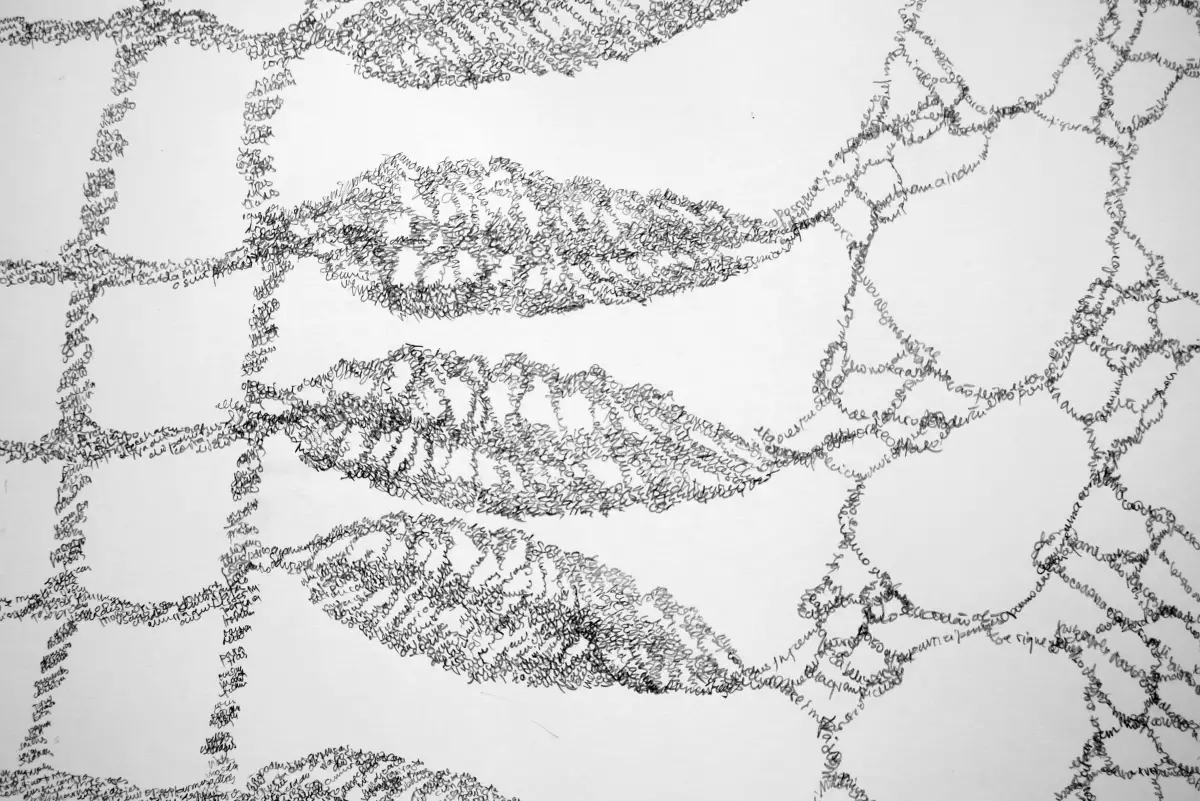Daisies and Palms
For several years now, a bobbin lace doily from Brazil has been hanging in my studio board, where in 2009 I was researching embroidery and lace patterns of the Candomblé religion. The Candomblé religion originated during the time of slavery. It unites elements of the Catholic faith and Voodoo religions from West Africa.
- Project:
- Written Lace

Migration of (textile) patterns and techniques
The priestesses of the Candomblé have an initiation period of seven years, during which they also have to learn to embroider. They dress in beautiful white dresses; the quantity and complexity of the patterns reflects their place in the strict religious hierarchy. These patterns were brought back 500 years ago by Portuguese settlers, mostly from the poorest parts of Portugal. The migration of (textile) patterns and techniques is a recurring topic in my work. Between 2008 and 2012 I made several films about the relationship between humans and textiles and the accompanying stories. This latest ‘written drawing’, is based on the above-mentioned lace doily measuring only 18 x 18 cm, but I have enlarged it to a drawing of ± 200 x 200 cm.


Multifaceted source material
The source material is multifaceted; on the history of handicrafts in Portugal, on the Portuguese colonization of Brazil, especially reports on migration and settlement, on the Candomblé religion. The other components are personal conversations with people from both continents, about the way we experience our cultural identities. These conversations focus on the paradoxes inherent to our shared history.
